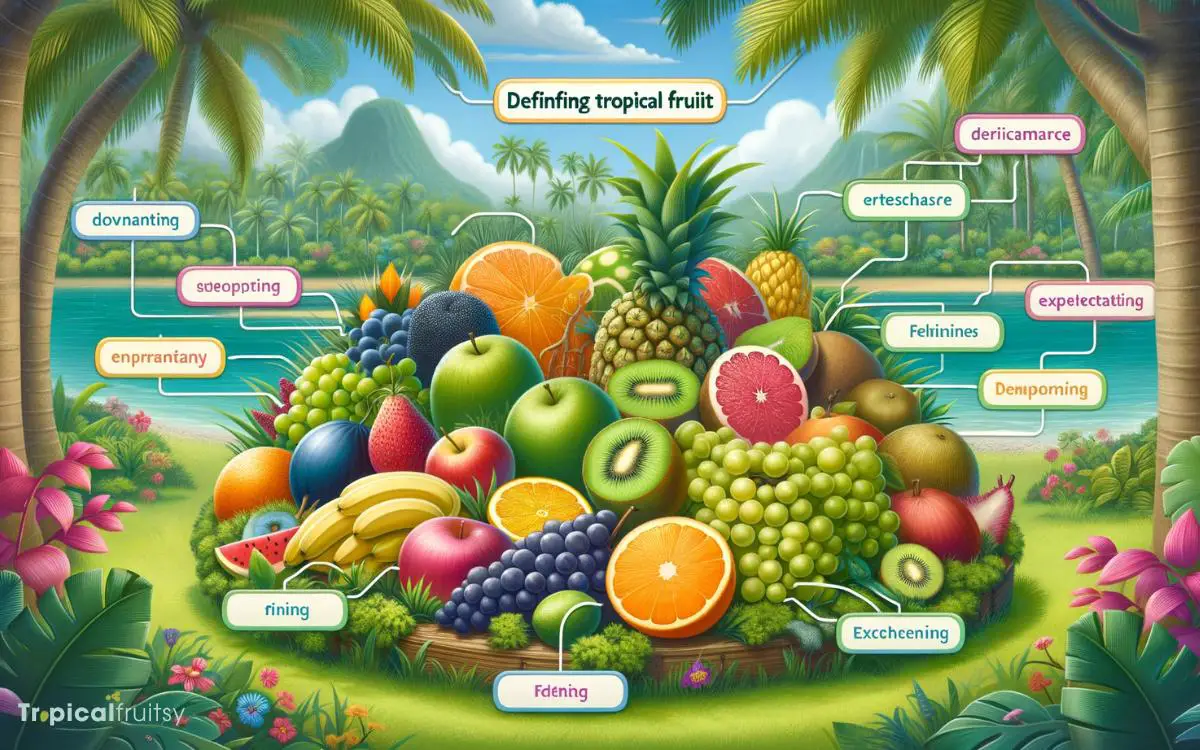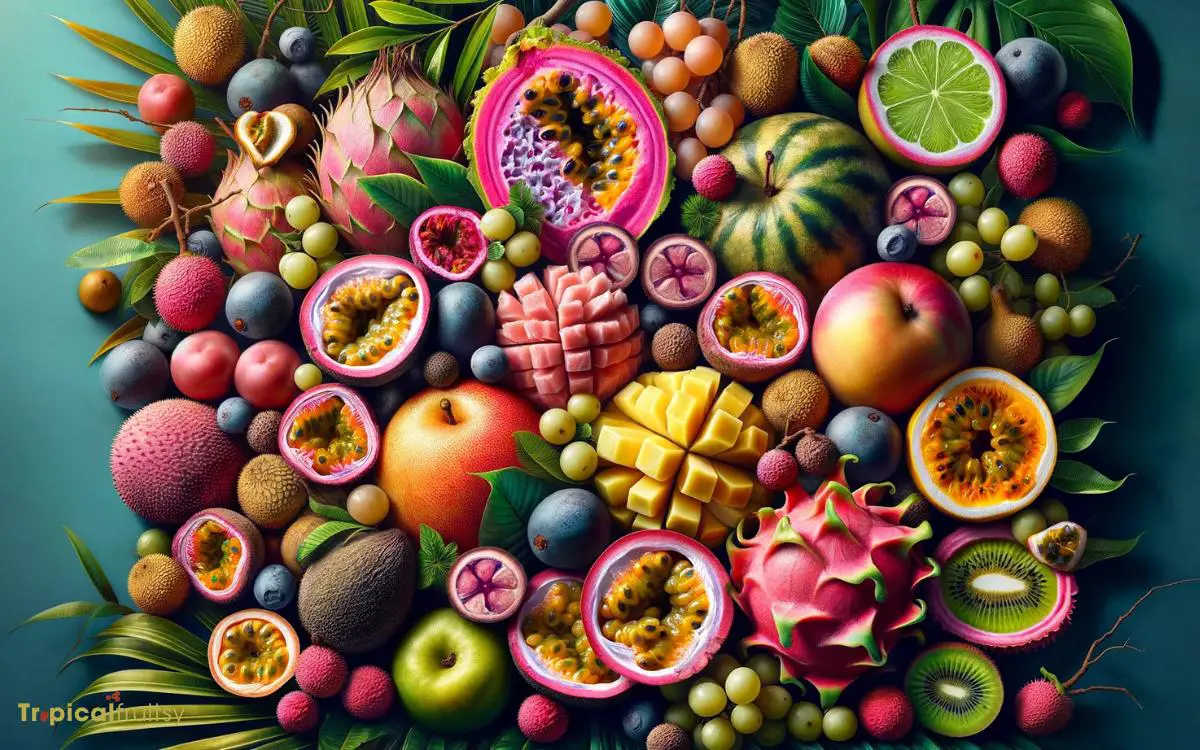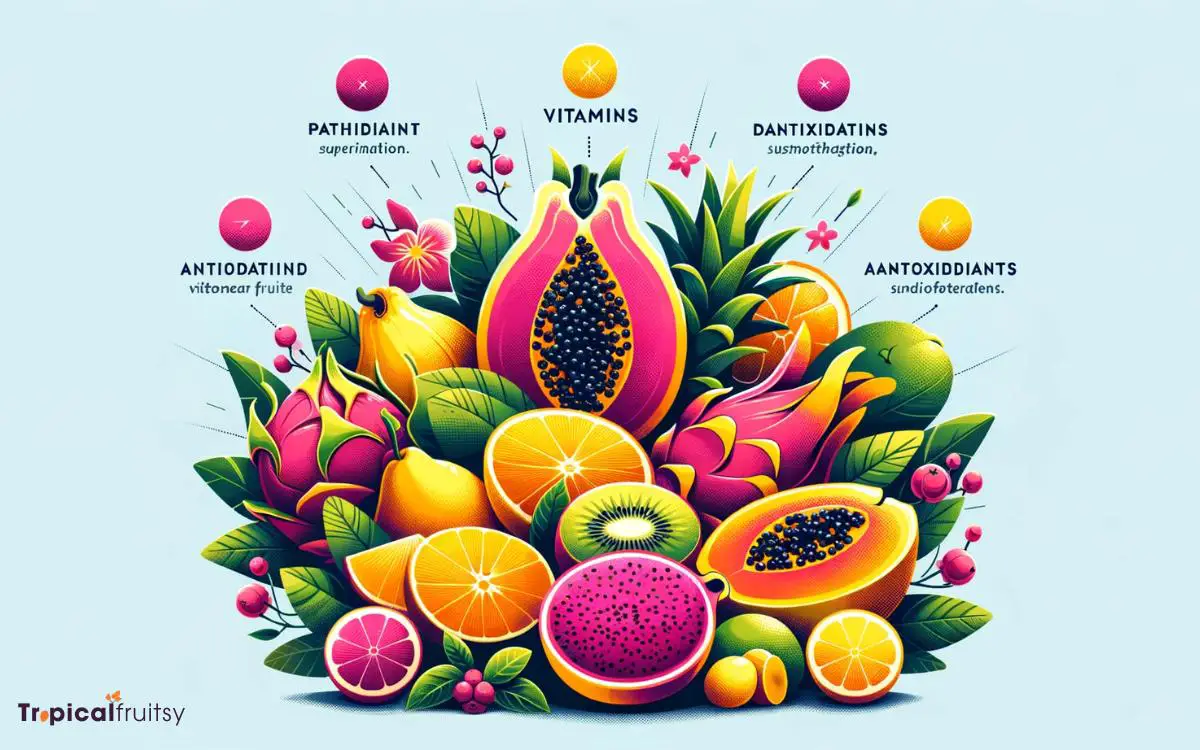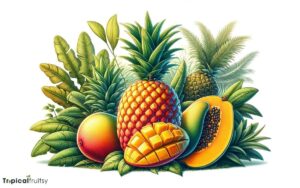What Is Considered a Tropical Fruit? Explore!
Tropical fruits are a category of fruits that grow predominantly in the tropics, a warm and humid region around the Earth’s equator.
These fruits are known for their inability to withstand frost and require a consistent warm climate to flourish.
The variety of tropical fruits includes widely recognized ones such as bananas, pineapples, and mangoes, as well as exotic types like durians, rambutans, and jackfruits.
They are not only sought after for their unique flavors and textures but are also valued for their health benefits, which include a rich supply of vitamins, minerals, and antioxidants.
Tropical fruits originate from the tropics, where the environment is conducive to their growth due to warm temperatures and high levels of humidity.
Unlike fruits from temperate regions, tropical fruits do not tolerate cold and can be damaged or killed by frost.
The range of tropical fruits is extensive, offering diverse tastes and nutritional profiles. These fruits play an important role in global cuisine, enhancing dishes and drinks with their distinct flavors.
Explore the exotic flavors and nutritional wealth of tropical fruits, nature’s gift from the equatorial belt.

Key Takeaway
Popular Tropical Fruits: A Comprehensive Chart
| Common Name | Scientific Name | Origin | Characteristics | Nutritional Benefits |
|---|---|---|---|---|
| Banana | Musa spp. | Southeast Asia | Sweet taste, soft texture | Potassium, Vitamins B6 and C |
| Pineapple | Ananas comosus | South America | Tart flavor, fibrous texture | Vitamin C, Manganese, Dietary Fiber |
| Mango | Mangifera indica | South Asia | Sweet and juicy, various textures | Vitamin C, Vitamin A, Fiber |
| Papaya | Carica papaya | Mexico and Central America | Sweet taste, soft texture | Vitamin C, Vitamin A, Folate |
| Guava | Psidium guajava | Central America | Sweet or sour taste, seedy texture | Vitamin C, Fiber, Antioxidants |
| Durian | Durio spp. | Southeast Asia | Strong odor, creamy texture | Potassium, Vitamin C, Fiber |
| Rambutan | Nephelium lappaceum | Southeast Asia | Sweet taste, hairy appearance | Vitamin C, Manganese, Iron |
| Jackfruit | Artocarpus heterophyllus | South India | Sweet, distinctive flavor, large size | Vitamin C, Dietary Fiber, Protein |
Defining Tropical Fruit

Tropical fruits are commonly characterized by their growth in warm climates, typically near the equator, where temperatures and humidity levels are conducive to their development.
These fruits, which include varieties such as mangoes, pineapples, and papayas, exhibit unique adaptations that enable their survival and propagation in these regions.
For instance, thick skins protect them from intense sunlight and various forms of precipitation, while their bright colors and aromatic compounds attract specific pollinators necessary for reproduction.
Scientific classification further refines the category by including botanical characteristics like seed type and plant morphology.
The aggregate knowledge of their distinct features and reproductive strategies is critical in understanding the essence of tropical fruits.
This comprehension of their nature seamlessly leads to the exploration of ideal growing conditions, which are paramount for optimal yield and quality.
Ideal Growing Conditions

Understanding the specific climatic requirements of tropical fruits is crucial, as they typically thrive in regions with ample sunlight, high humidity, and consistent warm temperatures throughout the year.
These conditions are quintessential for the photosynthetic processes and fruit maturation that define the lush flavors and nutritional profiles of tropical species.
Precipitation patterns play a significant role, with the majority of tropical fruit plants requiring abundant rainfall, often followed by a drier season to trigger fruiting.
Soil quality must be rich in organic matter with proper drainage to prevent root diseases. Cultivation practices must also adapt to the delicate nature of these ecosystems to maintain the balance required for optimal growth.
Having established the environmental prerequisites for cultivating tropical fruits, let us explore the common varieties that flourish under these conditions.
Common Varieties Explored

Commonly, fruits such as mangoes, pineapples, bananas, and papayas are emblematic of the diverse array of tropical fruits cultivated around the globe.
The tropical fruit taxonomy is rich with species that thrive in warm climates, offering a cornucopia of flavors, textures, and nutritional benefits.
To understand the significance of these fruits, consider the following:
- Mangoes (Mangifera indica): Rich in vitamins A and C, mangoes are renowned for their succulent flesh and versatility in culinary applications.
- Pineapples (Ananas comosus): Containing bromelain, an enzyme with anti-inflammatory properties, pineapples are both a sweet treat and a functional food.
- Bananas (Musa spp.): A staple energy source, bananas are high in potassium and readily available worldwide.
- Papayas (Carica papaya): Papayas are a digestive aid, packed with papain enzyme and antioxidants.
These fruits are not only delightful to the senses but also hold great nutritional value, epitomizing the synergy between pleasure and health inherent in the plant kingdom.
Nutritional Benefits

Delving into the nutritional advantages of tropical fruits, we find that they are not only delectable but also packed with essential vitamins, minerals, and phytochemicals that promote overall health.
These fruits often contain high levels of vitamin C, crucial for immune function, and vitamin A, important for vision and skin health.
Many tropical fruits are also rich in dietary fiber, which aids in digestion and can help regulate blood sugar levels.
The presence of antioxidants in fruits like mangoes and papayas helps neutralize free radicals, potentially lowering the risk of chronic diseases. Moreover, potassium, found in bananas and avocados, is vital for maintaining healthy blood pressure levels.
Analytically, the consumption of tropical fruits can be linked to a myriad of health benefits, substantiating their importance in a balanced diet.
Are Sweetness Levels a Key Factor in Determining if a Fruit is Tropical?
When we explore sweet tropical fruit reasons, sweetness levels play a crucial role in determining if a fruit is tropical. Tropical fruits are known for their intense, sweet flavors, and the high sugar content is a key factor in their classification. Mangoes, pineapples, and papayas are perfect examples of sweet tropical fruits.
Culinary Uses Worldwide

Across the globe, tropical fruits are celebrated for their versatility in culinary applications, ranging from fresh consumption to intricate dishes that highlight their unique flavors.
The gastronomic incorporation of these fruits facilitates a plethora of sensory experiences, often evoking a sense of exotic escapism and gastronomic delight.
When considering their utilization worldwide, one can observe:
- Mangoes being pureed for lassi in South Asia, imparting a rich, aromatic sweetness.
- Pineapples serving as a tenderizing agent in marinades, thanks to their proteolytic enzyme, bromelain.
- Papayas being incorporated into salads in Southeast Asia, providing a refreshing burst of flavor.
- Passion fruit being used in desserts for a tangy, seed-flecked contrast against creamy textures.
Each application not only leverages the fruit’s inherent qualities but also integrates cultural culinary traditions, creating a tapestry of global flavors.
Conclusion
Tropical fruits offer a remarkable diversity of flavors and nutritional benefits. These fruits, distinguished by their growth in warm climates near the equator, provide essential vitamins and minerals.
Ranging from the ubiquitous banana to the exotic durian, tropical fruits have a global impact.
For instance, bananas, one of the most recognized tropical fruits, are the fourth most important food crop in developing countries. This statistic underscores their significance in both diets and economies worldwide.






